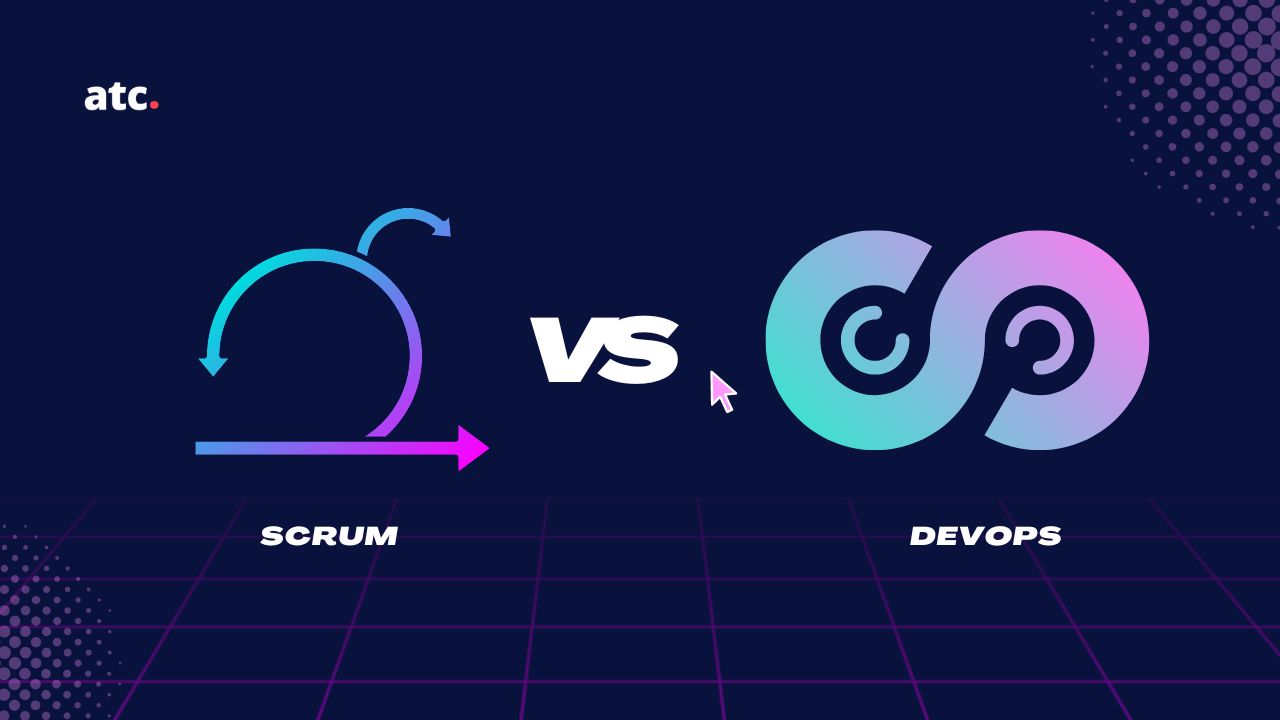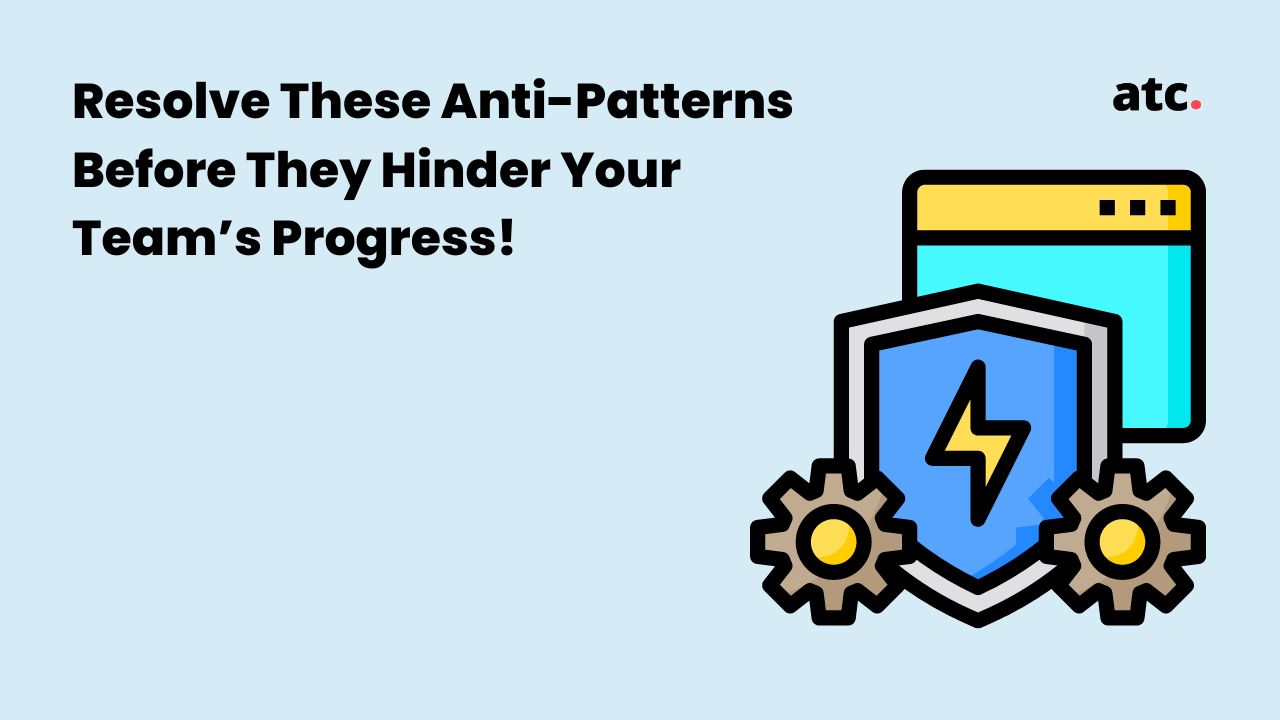Subscribe to the blog
Most aspiring tech professionals want to kickstart their careers by grabbing exciting job opportunities. But what usually happens is that they fail to develop a relevant skill set. As new software development frameworks, such as Scrum, DevOps, and Kanban, are transforming the development process and making it more customer-centric, developers should strengthen their knowledge to keep up with industry demands.
Moreover, with the current labor shortage in the USA, employers are seeking professionals who can help drive the ROI of development projects and contribute to their continuous improvement.
And this is why software development methodologies like Scrum and DevOps are popular.
These frameworks focus on maximizing productivity and streamlining the development process. Learning them will help you demonstrate your skills and possibly move into leadership positions.
However, there are many differences between the two.
Let’s do a quick DevOps vs Scrum comparison to help you understand their scope, current market demand, and job opportunities.
The Scrum approach
DevOps and Scrum grew popular pretty fast. However, both take slightly different approaches to software development.
Scrum breaks down an entire project into smaller pieces and cycles, also known as sprints. It encourages the team to reflect and learn from each sprint and continuously improve project outcomes.
Here’s a quick overview of how enterprises apply Scrum:
- Creating the Product Backlog: The first step is to create a product backlog with a list of requirements that the development team needs to work on. The product owner organizes this list and communicates the project's vision to the development team.
- Sprint Planning: Once the product backlog is ready, the Scrum master facilitates a sprint planning meeting where the stakeholders discuss and decide the sprint goal and which tasks to prioritize from the backlog.
- Daily Scrum: This is a time-boxed event where the Scrum master and development team discuss their concerns, roadblocks, and other project-related issues. It is an excellent opportunity for the Scrum master to track the team’s progress toward achieving the Sprint goal.
- Sprint Review: Here, the team and the stakeholders gather to review the completed work from the product backlog. The group collects feedback and decides on what to do next.
- Sprint Retrospective: It is a recurring meeting dedicated to discussing what went well and how to improve the sprint workflow.
The DevOps approach
When doing a DevOps-Scrum comparison, it is crucial to note that DevOps focuses on breaking down the communication barriers between development and the IT operations team. It propels the business forward through continuous process improvement and quality assurance.
The framework uses tools, practices, and methods to streamline and automate various stages and processes of software development and delivery. This helps teams develop product features rapidly and focus on customer satisfaction more effectively.
Top differences between the two frameworks
Below is a quick DevOps vs Scrum comparison that will help you understand the scope of each framework.
- DevOps focuses on software delivery, while Scrum focuses on software development
One of the drawbacks of Scrum is that it treats software delivery as an afterthought. Their concern is accomplishing product backlog tasks and improving the development process. And this is where DevOps can help.
DevOps is an amalgamation of development and operation as it involves the operation team and has numerous tools and practices to accelerate software delivery and enhance production architecture. In a nutshell, Scrum is an iterative development process with small teams, while DevOps focuses on testing and delivery automation with multiple cross-functional teams working together.
- They have different philosophies
Scrum follows an empirical process where a great emphasis is placed on boosting organizational agility and meeting customer needs. It promotes self-management and collaboration, where everyone works towards achieving a common goal. Through sprints and other time-boxed events, Scrum creates a consistent development cadence.
On the other hand, DevOps focuses on creating a culture where teams find new ways to improve and streamline processes. As a result, it improves organizational efficiency and addresses all software development and delivery stages.
- DevOps has a broader scope and reach
Since DevOps touches all stages of software development and delivery, it has a broader reach. This is because DevOps wants organizations to release faster updates more efficiently. It reduces friction between the development and operations teams through various automation tools to help them track, manage, test, and deploy faster.
Scrum, in comparison, limits its scope to the development team. As a framework, it doesn't discuss software operation, delivery, and maintenance.
Current market demand for both frameworks
According to reports, the global demand for Agile development and testing is expected to reach $30 Billion by 2026 with an annual growth rate of 18%. Since Scrum is the most popular Agile development framework, the adoption rate of Scrum for enterprises is also increasing. As per the 15th Annual State of Agile Report, 66% of organizations use Scrum as their preferred Agile methodology.
DevOps is also catching up with Scrum, with 75% of respondents saying DevOps transformation is critical for their organization. With cloud adoption increasing, the global DevOps market size will reach $57 Billion by 2030.
From the above stats, it is clear that professionals with relevant Scrum and DevOps certifications will thrive in their careers.
Job Opportunities For Scrum and DevOps Professionals
DevOps and Scrum comparison in terms of job opportunities is crucial to help you decide which certification is the right one for you. So here is a brief overview of the different job roles in both frameworks.
- Scrum
Two of the most popular job roles in the Scrum community are Scrum Master and Product owner. Let’s look at this quick table:
| Position | Job description | Average salary in the USA |
| Scrum Master | Acts as a link between product owners and the development team and helps apply the Scrum framework.Is the servant leader who guides teams to higher Scrum maturity. | $113,837 |
| Product Owner | Oversees all stages of product development and is in charge of refining the product backlog. Acts as the link between the development team and the end-users. | $119,261 |
To learn more about the differences between the job roles of Scrum Master and product owner, read this quick guide.
- DevOps
Here is a table exploring the top job opportunities for those who want to pursue a career in DevOps:
| Positions | Job description | Average salary in the USA |
| DevOps Engineer | Responsible for the smooth operation of the company’s IT infrastructure works with developers to ensure that all systems are efficient | $144,642 |
| DevOps Architect | Helps in the design and implementation of software applications | Between $105,000 to ₹180,000 |
| DevOps Consultant | Educates employees about DevOps tools, remove impediments and advises on how to implement DevOps strategies | $134,888 |
P.S. If you want to learn more about why DevOps is a lucrative career option, read this guide with eye-opening insights.
Learn the skills of tomorrow with ATC Training!
DevOps and Scrum offer developers and tech professionals the opportunity to earn higher salaries and accelerate their careers. If you want the same for yourself, ATC offers immersive Scrum Master and SAFe DevOps training programs led by industry experts.
Our Scrum Alliance and SAFe training programs stand out because they are:
- Industry-driven with a curriculum that addresses real-world problems
- Led by certified SAFe transformation experts
- Practical and offer multiple assessments, exercises, and live Q&A sessions
- Interactive and helps you connect with other industry professionals
- Affordable with flexible payment options
Reserve your spot today and gain access to exclusive discounts. For better understanding, let’s have a quick convo. Drop us a message here, and our team will reach out to you shortly.




